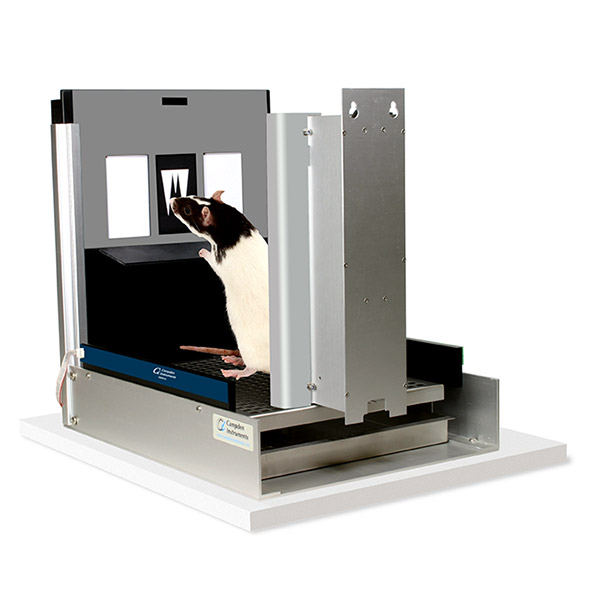
This is a habit or stimulus-response task in which the rodent learns a rule of the type "If shape A presented, respond to the left location; if shape B is presented, respond to the right location". This type of test is sensitive to damage in the dorsal striatum and is therefore relevant to Huntington's and Parkinson's disease.
Princz-Lebel O, Wasserman D, Skirzewski M, MacDonald P, Bussey T, Saksida L. (2019) Optimization of the touchscreen-based visuomotor conditional learning task in mice. The Canadian Association for Neuroscience (CAN-ACN) Scientific Program. Toronto, Ontario, Canada: The Canadian Association for Neuroscience; 2019.
Delotterie D, Mathis C, Cassel JC, Dorner-Ciossek C, Marti A. (2014) Optimization of touchscreen-based behavioral paradigms in mice: implications for building a battery of tasks taxing learning and memory functions. PLoS One.; 9(6):e100817
Janisiewicz AM, Baxter MG. (2003) Transfer effects and conditional learning in rats with selective lesions of medial septal/diagonal band cholinergicneurons. Behav Neurosci.; 117(6):1342-1352.
Chudasama Y, Bussey TJ, Muir JL. (2001) Effects of selective thalamic and prelimbic cortex lesions on two types of visual discrimination and reversal learning. Eur J Neurosci.;14(6):1009-1020.
Bussey TJ, Duck J, Muir JL, Aggleton JP. (2000) Distinct patterns of behavioural impairments resulting from fornix transection or neurotoxic lesions of the perirhinal and postrhinal cortices in the rat. Behav Brain Res.; 111(1?2):187-202.
The Second Generation Bussey Chambers with Intelli-interface supports up to 20 chambers on one PC. On the strength of 10 years of feedback and development, the system is even more flexible and with more features.
Adapted for mice, this is a habit or stimulus-response task in which the rodent learns a conditional rule.

